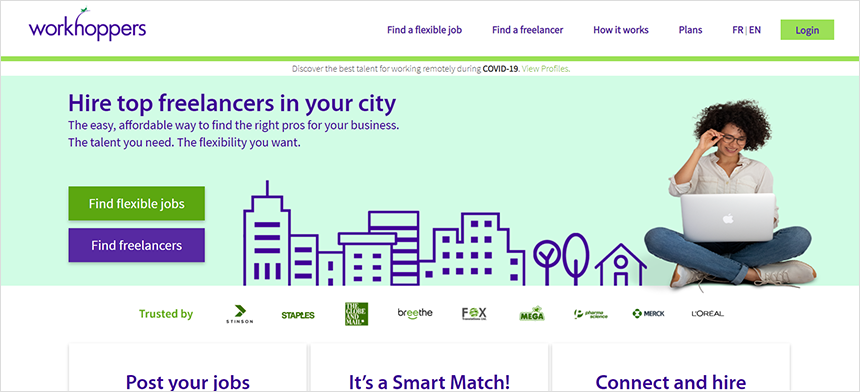Online meetings have become a part of the way we live. And while all of the standard protocol for meetings (agenda, minutes, follow up) remains the same, this transition from in-person to virtual has introduced a whole new playbook.
What is the protocol of this new realm?
In both our personal and professional lives, most of us have attended more than a few virtual meetings at this point. Collectively, through the tried-and-true method of hands-on experience, some definite parameters to virtual meeting etiquette have emerged.
From preparing, to conducting yourself during the meeting, to hosting, to avoiding major gaffes, here is the definitive guide to virtual online meetings.
How to Prepare for an Online Meeting
From weak microphones, to muted audio, to major technological glitches, to your cat jumping across your desk, an online meeting poses a whole new set of challenges and distractions.
Even more than meetings in real life, it’s important to over-prepare for a virtual meeting. Because even when you think you’ve dotted all your i’s and crossed all your t’s, Fed-ex will ring the doorbell with a delivery, just as you’re unveiling a new project.
Here are some boxes to check before you even put on your headphones.

Master the Platform
Although there was an initial grace period where it was permissible to start a meeting ten minutes late because of technical glitches, at this point a virtual meeting is expected to be run like a real-life meeting: it starts on time, and sticks to the agenda.
In order to ensure you’re ready, become proficient on the communication platform your meeting is using. Watch an online tutorial for Zoom, Google Hangouts, Microsoft Teams, or whatever other platform you’re using. Pay attention to crucial details like muting and viewing options.
Test for Sound
Good audio is crucial for an online meeting. If there’s no sound, there’s no meeting.
Be sure to run through audio with a friend to identify if your speaker has an echo, and if you’re able to be heard.
A headset (connected to the computer with a wire or bluetooth) is a good accessory to invest in as it cuts out the external noises in your room.
Some computers aren’t equipped with the greatest microphones. In order for people to hear you, consider purchasing a separate microphone from the one on your computer. This allows you to be heard if you want to interject during a discussion.
Prepare All Documents
Digging through files or logging onto an account mid-meeting adds unnecessary confusion and delay, so have any documents you plan to share at the meeting open and ready on your desktop.
Eliminate the need to walk away from the computer mid-meeting by having everything you need ready at hand, including pens, paper, notes, and coffee or tea.
Prepare the Room
It’s distracting for everyone if your spouse or children interrupt your meeting. Let the people in your household know that a meeting is in process, perhaps by putting a sign on the door.
Once you have all systems ready, you’re set to tap “Start Meeting”. And off you go!

Making a Good Impression
The virtual meeting has brought greater scrutiny to certain parts of our appearance…and less to others. And who would have thought that the walls in your home reflect a lot about you? Well, in a virtual meeting they certainly do!
The following are important things to keep in mind when considering how we’re showing up to a virtual meeting.
Dress the Part
An online meeting creates an odd dynamic where we’re in our casual home setting and professional meeting environment at the same time.
Even though you may have just gotten out of the shower, or come in from playing with your kids, don’t look it. Treat the virtual meeting like you would a meeting in real life.
Know the dress code of the group you are working with. Wearing appropriate clothing gets us into work mode, and we bring the right mindset to the meeting.
In a virtual meeting, people mostly see your face—so put your best face forward! Take the time to style your hair, wash your face, and put on make-up.
Although we’re more inclined to lounge in our homes, be sure to find a study chair; an erect demeanor communicates you’re present and at attention.
Light Up Your Face
Make sure your face is well-lit for the meeting.
A dimly-lit room creates shadows. If attendees don’t have a clear impression of you, they won’t be able to read your non-verbal gestures and it makes it harder for you to engage.
A video conference light that attaches to your computer screen, is affordable and ensures that your face is well-lit and visible throughout the meeting.
Or, sitting near a window gives your face a natural glow. If the meeting takes place in the evening, you can recreate the same effect by placing a lamp just behind the computer screen. A second light behind you is helpful as well.
Minimize Multitasking
Even though we’re used to doing ten things at once when we’re in front of the computer, for most meetings this doesn’t fly. The other attendees can tell when our attention is diverted and it comes across like we’re uninterested.
The only multitasking that should take place at a formal meeting is note-taking.
However, gauge the tone of the meeting you’re in. At a super-casual business meeting, or a chat with friends, it might be ok to be on your phone and, say, cooking at the same time.
Curate Your Background
What you choose to show in your background says a lot about you. Things like funky posters, dirty dishes, or toys strewn across the floor distract other attendees.
Before the meeting, check your camera to see what’s showing up behind you. Is it what you’d like to reflect? Generally, a clean, neutral background is best.
If your house is a mess and cleanup just isn’t going to happen, go with one of the virtual backgrounds available on the communication platform.
As you can see, just like real life, we still need to give attention to our personal presentation at virtual meetings. There’s just a few nuances to the standard protocol.

Masterful Communication
Virtual meetings add a new dynamic to communication. Although many of the age-old guidelines of making eye contact and paying attention still apply, the virtual realm tweaks them just a little bit.
Look into the Camera!
This is so non-intuitive. We’re accustomed to looking into a person’s eyes when speaking to them. Looking into a person’s face in a virtual meeting, however, appears to them like we’re looking at their chest.
Look into the camera as you speak, as this feels far more natural and direct to the other attendees. To them, it appears you’re looking them in the eye.
Position the Camera
The angle of the camera, and its proximity to us, really affects how we look. Too close, we look like a talking head. Angled the wrong way, and we’re either talking up or down to everyone else.
In order to look directly at the meeting attendees, adjust the camera so it’s level to your eyes. Also, keep it distanced so that the camera captures your chest and shoulders, rather than just your head and neck. This gives you a more real, human appearance.
Use Non-Verbal Communication
Even in a virtual meeting, 93% of communication is still non-verbal. People look at our faces to see our reactions, emotions, and whether or not we’re interested or paying attention.

Using hand and body movement as we speak, and nodding or giving thumbs up to others allows us to communicate effectively without words.
Eliminate Background Noise
Everyone at the meeting hears the noises coming from our end of the microphone. Even typing on our computers, especially if we have long nails, sounds loud and clacking.
Generally, always mute your microphone if you are not speaking. This prevents the microphone from picking up any noise coming from your space.
If you’re in a lively back and forth with some other attendees, it’s ok to keep the microphone on, but be sure that it doesn’t create an echo.
Is Stepping Away ok?
We all probably want to step away from a meeting from time to time–to make coffee, for a bio break, or if our kids are speaking to us.
This is appropriate, but out of respect for the other people contributing to the meeting, do it seldomly and try to be brief. Before stepping away, turn off the camera and mute the microphone.
To keep the host in the loop, send him or her a private chat if you’ll be gone for more than a few minutes.
Using Chat Boxes
Chat boxes provide another way to communicate amongst meeting attendees. Through chat, you can communicate via written message to individual members, or the entire group.
Messaging the entire group is a good idea when you have a question but don’t want to interrupt the flow of the meeting. Messaging individuals is a great way to congratulate them on achievements.
Following these virtual meeting etiquette guidelines of engagement makes you present to others at the meeting, and allows you to communicate as though you were with them in the room.

Hosting Hospitably
As with any meeting, the host sets the tone for the meeting, presents the agenda, and directs the conversation throughout.
Follow these simple guidelines, and you’ll virtually be the host with most!
Assessing Time Zones
When scheduling your meeting, consider the time zones of everyone in attendance. You can use a time zone converter tool to make sure it’s scheduled at a reasonable time for everyone.
Platform Proficiency
Although this is discussed earlier, it bears repeating as it’s crucial for the host to be proficient on the platform.
To prevent a rocky start, the host needs to be sure everyone at the meeting has received the invite, and the proper link to the meeting, and that everyone knows how to log on.
Organizing emails in contacts before the meeting allows you to know you’re getting the right information to the right people.
Assign a Chat Room Host
If you’re hosting a meeting with twenty or more people, consider assigning one person to monitor the chat room. This way, questions and concerns are addressed and you’re still able to put full attention into conducting the meeting.
Make Introductions
Unlike in-person meetings, attendees don’t have the opportunity for hallway chat, or to sit down and introduce themselves before the meeting. As the host, a quick round-table introduction at the onset helps to break the ice and create warmth and familiarity amongst attendees.
Wrangling Sound Issues
Good audio is critical to running a meeting smoothly, so it’s important to identify and resolve sound issues quickly.
A microphone with a loud echo affects everyone’s ability to participate. Using the communication platform, identify which microphones are on in order to quickly identify potential culprits.
Ending the Meeting
As the host, being present throughout sets a cohesive tone. If possible, wait until everyone else has left before you exit the meeting. Assign someone else to host and provide direction if you’re leaving early.
In order that people have access to important information discussed, send a meeting recording to all attendees as soon as it is processed.
Virtual meetings require a few new things to learn and pay attention to. But the function is still the same, so once you master these skills, you’re golden!

Avoiding Gaffes
Although we may not realize it, certain behaviors in online meetings come across as somewhat embarrassing, or just downright rude.
Here are some faux pas in the rule book of virtual meeting etiquette.
Mute all Notifications
Our computer and phones ding at us all day long.
These, too, pose a distraction, so be sure to silence your cell phones, turn off computer notifications, and shut down chat windows before the meeting commences.
No Private Behavior
Since we’re sitting by ourselves at a virtual meeting, it’s easy to engage in behavior that we’d intuitively refrain from at an in-person meeting. However, we’re still very much in a public setting, so things like picking our eyes and scratching under our arms is inappropriate.
Private behaviors such as kissing a spouse is also something to avoid.
Avoid Lurking
Although it’s ok to turn off your microphone and video for a minute or so, doing this long-term creates the appearance of someone present but not participating.
This practice, known as lurking, creates stale energy at a meeting, and communicates lack of interest and involvement.
Dressing From the Waist Up
It’s tempting to put on a nice shirt over a pair of sweatpants and call ourselves dressed appropriately. Our cover is busted, however, if we have to quickly get up to check the thermostat, or attend to our dog during the meeting.
To avoid this embarrassing scenario, it’s best to just suit up from head to toe.
Conclusion
The virtual meeting is more commonplace than it ever has been. And it’s probably not going away anytime soon.
For this reason, it’s important to appreciate the nuances a virtual meeting brings to the way we communicate and present ourselves. Once we understand the virtual meeting etiquette, and how to interact in meetings, they’ll become second nature.
The good thing is, as much as things change, they also stay the same. A virtual meeting is no exception. As with in person meetings, it’s still a forum for constructive discussion in order to come to decisions and solutions about a topic or problem.
And thanks to technology, we’re able to have these discussions from the comfort of our own home!




























































